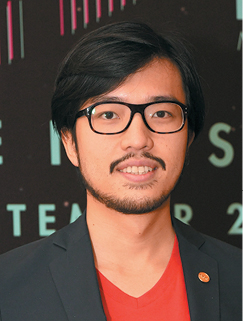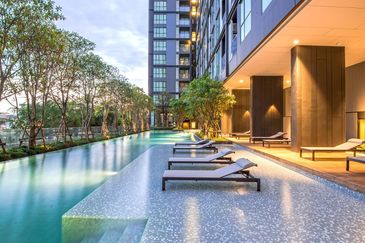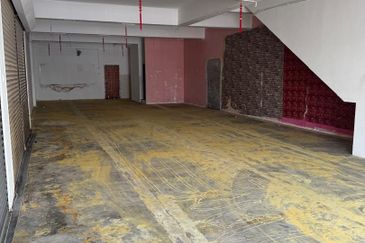 How do we make housing more affordable? How can we make our daily lives easier without the need for deep pockets? Those are questions that are being asked globally and one solution could be through smart design including in city planning and construction or smart cities.
How do we make housing more affordable? How can we make our daily lives easier without the need for deep pockets? Those are questions that are being asked globally and one solution could be through smart design including in city planning and construction or smart cities.
When one talks about smart cities, the idea is not to create a new city from scratch but to find ways of improving people’s lives by using technology, according to Hong Kong-based Ho & Partners Architects Engineers & Development Consultants Ltd deputy managing director Nicholas Ho.
For instance, transit-oriented developments (TODs) could be a solution to more affordable housing as they connect people living in the suburbs to the city centre where they work, enabling them to own a comfortable home without being financially over-stretched.
“For example, TODs improve people’s mobility while the usage of mobile devices like tablets and mobile phones enables people to work anywhere. A smart grid energy strategy could also help a city conserve energy.
“Technology could also help improve the living environment by reducing pollution or using a smart mobile system that promotes walkability in cities, as well as help users plan their route to avoid traffic congestion. All these are designs that are moving towards the creation of a smart city,” he explained.
He stressed that the “smart city” concept should be targeted at building sustainable environments, improving water and energy efficiency, and making people’s lives easier, physically as well as financially, Ho told the audience during his talk titled “How SMART can you AFFORD to be?” at the Future Forward Forum 2017 on Sept 7.
Themed “Trends: Insite”, the forum was organised by Rehda Youth, the youth division of the Real Estate and Housing Developers’ Association Malaysia, in partnership with Nippon Paint Malaysia. EdgeProp.my was the official media partner.
Looking into the crystal ball, he sees the “smart” concept being more and more present in all aspects of our lives — at work, wellness, play and even in preventing natural disasters.
“This could be done through incremental and disruptive innovation. However, this will take time to realise,” he said.
He explained that incremental innovation focuses on enhancing the competitiveness of existing products and services by reducing costs while adding extra features.
Disruptive innovation, on the other hand, refers to the use of existing and new technologies, products or services that create their own new market and value network, which would eventually disrupt the existing market and value network.

Affordable housing
The issue of affordable housing is close to Ho’s heart as Hong Kong is well-known for its high cost of living; many low-income families are living in “mosquito” apartment units of less than 180 sq ft in an unhealthy environment.
According to the 13th Annual Demographia International Housing Affordability Survey: 2017 conducted by Wendell Cox Consultancy, Hong Kong, Sydney in Australia and Vancouver in Canada have topped the list of the 10 least affordable housing markets in the world.
Being “smart” in the construction process can help reduce the cost of building as the use of new technology can reduce wastage and pollution in the construction process. For instance, the implementation of the Design For Manufacture and Assembly techniques or approaches, where one focuses on ease of manufacture and efficiency of assembly, could help reduce wastage and labour as well as speed up the building process.
The cost-saving may encourage developers to build more affordable and good-quality homes for the mass market.
Government has to take the lead
Ho noted that the government needs to take the leading role in encouraging private sectors to move towards the direction of building sustainable and smart cities.
This could be done through incentives or tax reliefs for developers or business operators who are willing to take the initiative in promoting the smart and sustainable city concept which improves the living environment.
“The incentives and friendly policies could also attract foreign investors in bringing in their investment, technologies and talents into the country,” he told EdgeProp.my.
He noted that international investors, such as Hong Kong and China developers, are keen to invest in smart city developments. However, they are looking for places that could provide them good returns or have policies that welcome foreign investors.

Despite the great opportunities that could be explored in developing a smart city, Ho stressed that the government also needs to strike a balance between smart city development and the welfare of its people. It may even need to take the route of sacrificing people’s jobs during the transition period into a smart city.
However, human resource training to equip wage earners with new skills can be done to avoid the majority of people from losing their jobs when automation or technology takes place in production.
“Striking a balance is a terrible and difficult task for the government. The disruption of technology will definitely cause the diminishing of certain work opportunities.
“Every country has its own way of striking a balance. This will challenge the flexibility of the government structure and will depend on the aggressiveness of private companies in pushing the threshold in redesigning the city,” Ho remarked.

This story first appeared in EdgeProp.my pullout on Sept 15, 2017. Download EdgeProp.my pullout here for free.
TOP PICKS BY EDGEPROP

Kenwingston Skylofts USJ 1
Subang Jaya, Selangor

Subang Jaya City Centre (SJCC) : Teja
Subang Jaya, Selangor

Taman Perindustrian Air Hitam Phase 1
Klang, Selangor

Ridgefield Residences @ Tropicana Heights Kajang
Kajang, Selangor

Jalan Taman Setiawangsa
Taman Setiawangsa, Kuala Lumpur




















